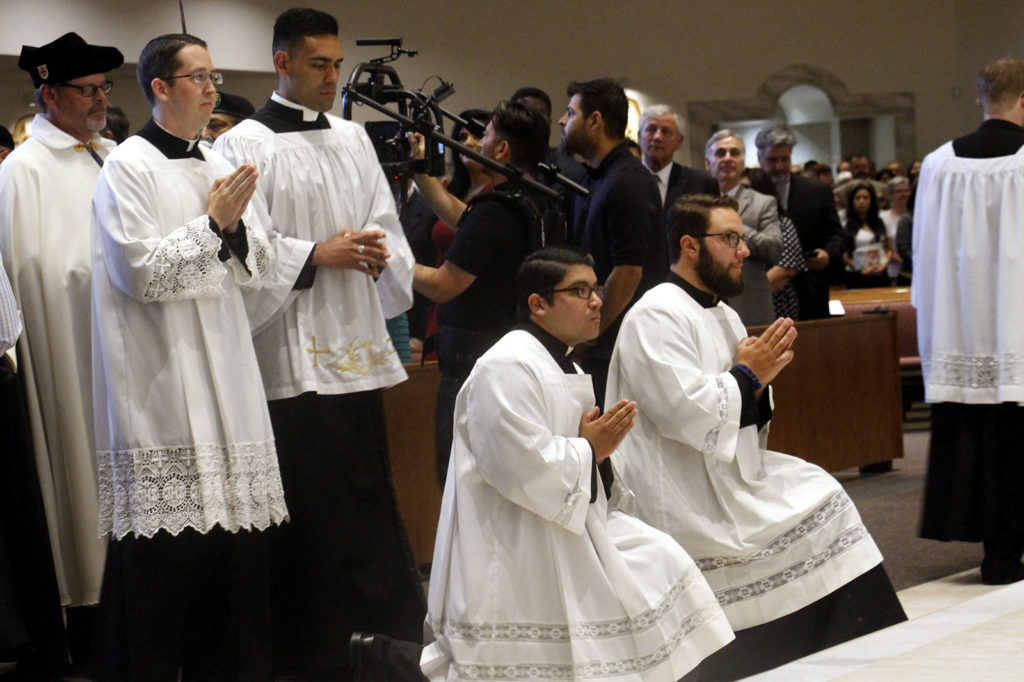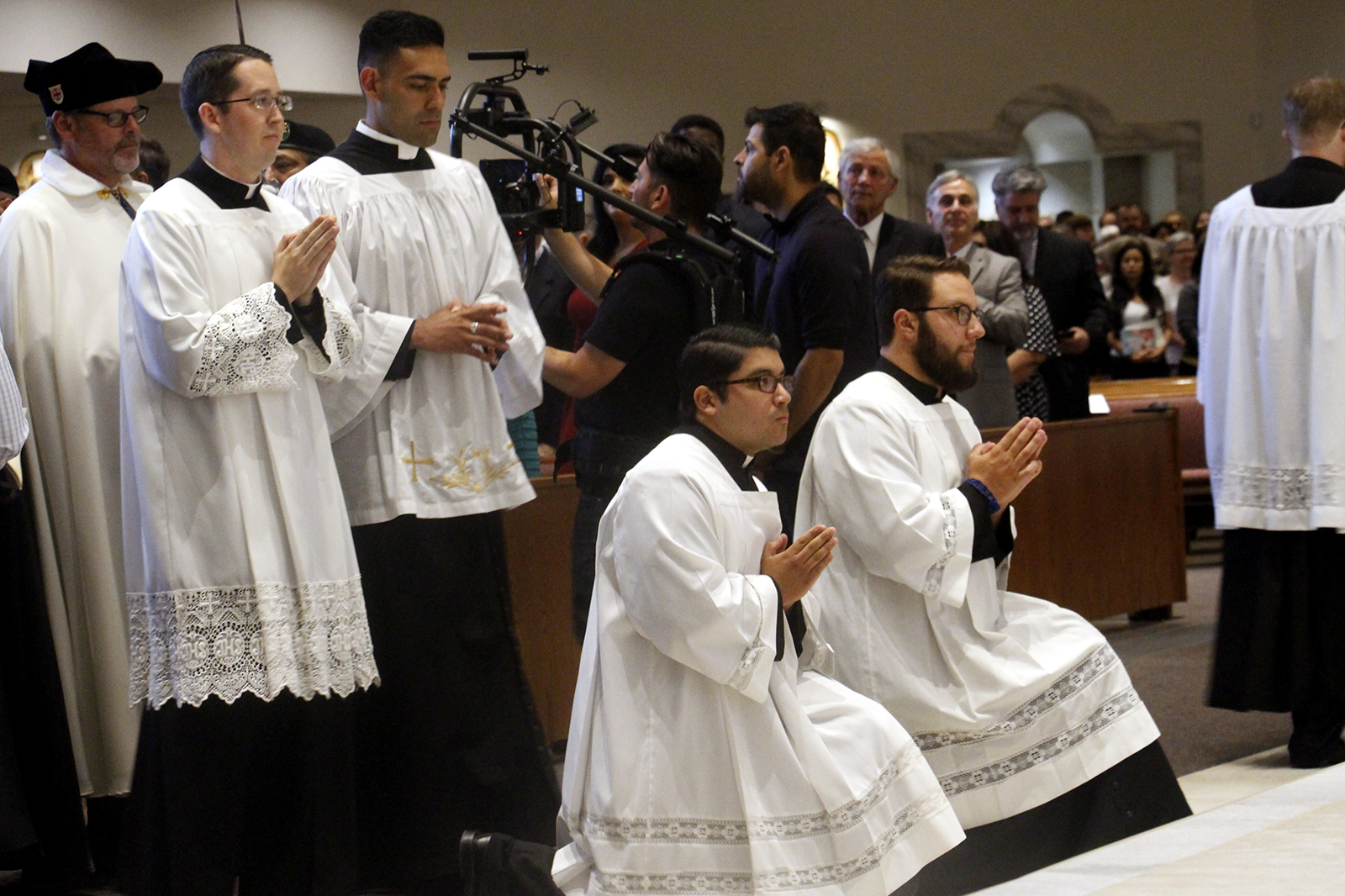
If a picture is worth 1,000 words, then the forthcoming 2018-2019 seminarian poster containing individual headshots of each prospective priest would be worth 40,000.
Office of Vocations
Behind every priest, and every married man, is a story of discernment — seeking God’s plan and making it a reality.
Vocations to the priesthood are vital for meeting the spiritual and pastoral needs of the 1.1 million Catholics currently living in our diocese.
By the Numbers
40
Approximate total number of seminarians expected for the 2018-19 year
15
Number of new seminarians for the Diocese of Phoenix
18-25
Average age of seminarians for the Diocese of Phoenix
$40,000
Cost to form an individual seminarian per year, including tuition, housing, food, retreats, etc.
6-9
Average number of years a seminarian devotes to pre-ordination formation
It appears the number of seminarians in the Diocese of Phoenix will hover around 40 by August. That’s far above the average of 29 the faithful have seen in the last five years.
An historic 15 seminarians are new with the diocesan Vocations Office never seeing more than 11 “freshmen” at once. Three of them come directly from the student and staff list at St. Mary’s High School.
A separate trio belonging to the Diocese of Phoenix professed first vows with the Franciscan Friars of the Holy Spirit at St. John the Baptist in Laveen June 23.
“When I entered the seminary, there were 23 [total seminarians] and the numbers began to grow under the good leadership of Fr. Don Kline,” explained Vocations director Fr. Paul Sullivan, who was ordained in 2007.
Young adults experience tremendous growth between ages 18 and 25 — providentially the average age of Phoenix’s seminarians. The oldest is about 30 years old.
“For seminarians who live in community and receive guidance of spiritual directors, house fathers and the teachers and priests in the seminary community,” spiritual growth is exponential, Fr. Sullivan said. “When a young man gives himself to the Lord in this context, the transformation/conversion is remarkable.”
It’s possibly incalculable this side of heaven. What is more tangible, however, is the cost of educating these men. It’s about $40,000 per seminarian per year. That includes tuition, housing, food, retreats and other fees related to their formation. So, it will take about $1.6 million in the coming academic year alone to educate diocesan seminarians.
Given the rigor and all-enveloping aspect naturally present at a seminary, secular employment to offset costs is not a feasible option. It wouldn’t be fair to burden each seminarian and his family with 100 percent of formation expenses, especially considering he belongs to the entire diocesan family. While only one parish affiliation is generally listed on the seminarian poster, he serves at a different parish or diocesan office each summer, and God willing, at ordination, will commit to serving the local Church every moment of his life.
“I feel called to embrace them, to cheer them, to support them, to love them because they’re stepping out ahead of us,” said Donna Killoughey-Bird, an East Valley Catholic who serves on the Board of Trustees for the Pontifical College Josephinum in Columbus, Ohio, one of three places of priestly formation for diocesan seminarians. She described seminarians as models of how all Catholic laity and ordained are called to go forth and preach the Gospel with their lives.
Monies collected through the ongoing “Together Let Us Go Forth ~ Juntos Sigamos Adelante” diocesan campaign — currently finishing at 20 parishes and missions and moving to 24 others July 1 — are precisely aimed at forming disciples across the board.
Every parish plus several diocesan ministries and Catholic outreaches are benefiting. Exactly $4 million is being earmarked to support seminarians without overburdening current funding sources including the diocesan Charity and Development Appeal and organizations like the Serra Club, which has three diocesan chapters.
“Whether a man gets ordained or not, it is a joy to walk with young men who seriously and wholeheartedly ask God what His will is for their lives,” Fr. Sullivan said. He cited Pope Emeritus Benedict XVI who once said the Church will be reshaped by saints whose minds learn to probe deeper than day-to-day life. “Formation work is to help young men to live by this deeper and wider way of seeing life.”






